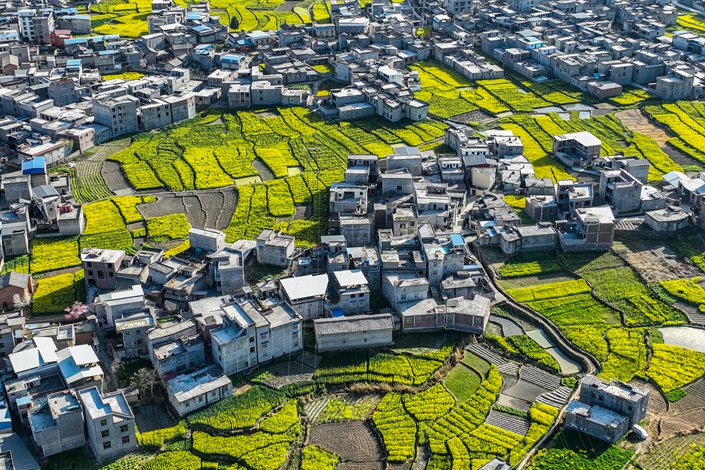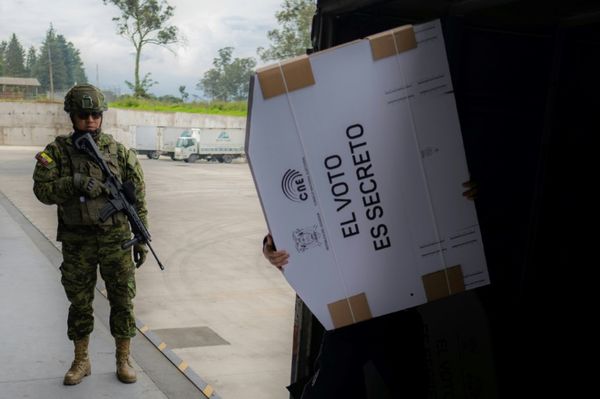
On a recent trip to the countryside, the first thing I noticed was that the construction of houses was in full swing, but it was a mess. Some houses were large and lavish, while others were empty and unoccupied. In some places, powerful locals and those who got rich outside the village had encroached on public land. On the surface, it might look like there isn’t enough space in the village to build in a more orderly fashion. But the real problem is the lack of a clear line between public and private space.
Private versus public
In the countryside, what counts as “private” space is residents’ homes and any land set aside for home construction. “Public” space includes things like roads and fields.
In many villages, the illicit occupation of public spaces by private interests is caused by the unclear demarcation between “public” and “private” parts of settlements. Without a clear line, “private” entities — wealthy local families, people who have made money outside the area, or families of officials beyond the village — occupy extra space. When the rich and powerful make such a move, everyone else will follow suit. They may not have the money to build a big house or engage in major construction, but they will encroach on public space nonetheless, even if it’s just to build a toilet or a pigsty.
For example, when housing reform began in Yujiang, a small village in Jiangxi province, dozens of toilets cropped up all of a sudden, built on local public land. This was how people expanded their private territory at the time. In the same village, at an intersection in front of the village committee, locals with influence blocked the road with their new builds.
Signs of chaos are often our first impression when entering a village. More significantly, they are a sign of rural decline in China. No matter how much energy we spend on rural revitalization as a country, the key is to clarify the boundaries between “public” and “private” spaces, for which clear institutional arrangements should be made.
Institutional arrangements
To make institutional arrangements for the division of “public” and “private” space, the first thing is to ensure “private” territory is protected. The most basic right of rural residents is the guaranteed allocation of housing land for each household.
In recent years, a large number of farmers have built houses by the roadside. Throughout history, village activity has centered around rural agricultural production — driving cattle to plow the fields and managing water — which have meant being as close to the fields as possible. Today, the configuration of homebuilding land should correspond to a change that is shaking up rural society as a whole.
Along with the redistribution of homebuilding land, it is in planning — the radius of new settlements, the merging of villages and the activities villages carry out — that the key to rural revitalization is found.
Once the rules are set, a village can change shape in an orderly way: changing from a 200- to 300-household natural village to a relatively large cluster of settlements. In the process, a lot of “public” space emerges.
What can villagers do there? Economic activities, new industries, rural cultural facilities and recreational activities, you name it. As the form of the village changes, it cultivates a new sense of life, culture and beauty.
Where to start?
The next question is, who can sort out what is public and what is private space. Where to start in clearing up the rampant encroaching of the public space that takes place in the countryside?
In identifying targets of this process, we should start with the strong and the powerful.
This requires institutional design: cadres from villages and collective organizations should take the lead in eliminating extra “public” spaces occupied by themselves and their friends. Yujiang county in Jiangxi has already done this, clearing up “private” spaces that have invaded the “public” parts of the village.
In many places, fines and fees are levied on those who engage in such encroachment. But these rarely help. The most important point is to clean up the “public” space occupied by rural powerhouses with power, capital, and family connections.
Yujiang offered an important example: talented people who have returned from the outside working with village cadres, and together enforcing village order.
Village returnees have less tolerance for the chaos, and tend to be wealthier than the locals. Together with the village cadres, they can tidy up the village and disrupt the power structures of local strongholds, after which others will follow. A regular form of public space can then finally emerge and function.
If the problems of disorder and public-private space division in the village are solved, the settlement issues in the village will also be solved, and the countryside will begin to transform from decay to revival. The first step is the most important: a clear definition and protection of public and private spaces.
Liu Shouying is dean of the School of Economics at Renmin University. The Chinese version was originally published in the Economic Observer. The English version is an edited excerpt.
The views and opinions expressed in this opinion section are those of the authors and do not necessarily reflect the editorial positions of Caixin Media.
If you would like to write an opinion for Caixin Global, please send your ideas or finished opinions to our email: opinionen@caixin.com
Contact editor Heather Mowbray (heathermowbray@caixin.com)
Get our weekly free Must-Read newsletter.







